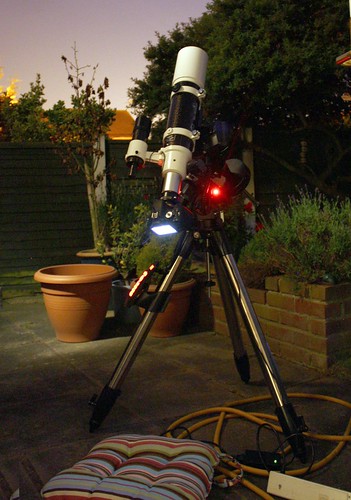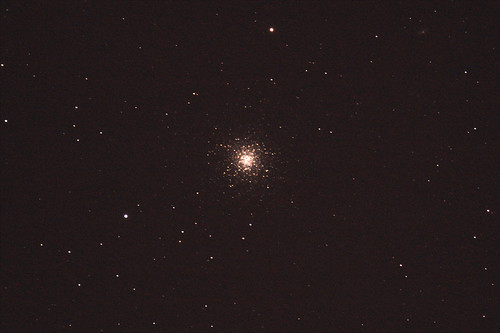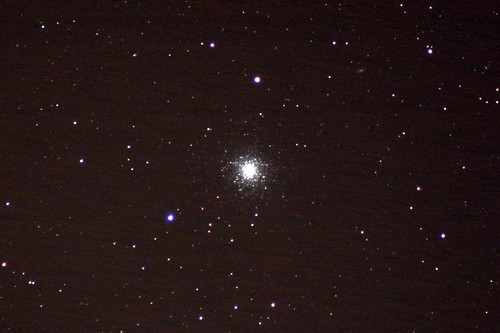 I returned home from work yesterday just to meet the delivery driver at the door, to receive my new Skywatcher 80ED telescope. Unboxing it I felt like a child at Christmas, slowly taking pieces out of their protective bags and looking at them wondering what each bit did and what goes where. I first mounted the scope on my CG-5 and just played around with the balances, counterweight, and just getting a feel for it. There it stayed until it got dark (my girlfriend wasn't too impressed with it being left in front of the TV and her being too afraid to move it knowing I've spent an entire months salary on it all).
I returned home from work yesterday just to meet the delivery driver at the door, to receive my new Skywatcher 80ED telescope. Unboxing it I felt like a child at Christmas, slowly taking pieces out of their protective bags and looking at them wondering what each bit did and what goes where. I first mounted the scope on my CG-5 and just played around with the balances, counterweight, and just getting a feel for it. There it stayed until it got dark (my girlfriend wasn't too impressed with it being left in front of the TV and her being too afraid to move it knowing I've spent an entire months salary on it all).Then a miracle happened, I had clear skies. They weren't perfect as here in the UK has been very hot and muggy, so there is a slight haze lingering around in the evenings, and I went out pretty early - Polaris was quite faint as it wasn't long after full sunset, but I was eager to get out there and playing. Having lined up the mount with Polaris, I had a look through the camera's viewfinder (camera attached with a t-ring to the back of the scope) and was greatly surprised to find Polaris in sight, not right in the middle, but it was there. I then aligned the mount with Arcturus, Dubnhe and Deneb? (I think!) and took this opportunity to line up the finder scope, which always surprises me by how much you can see through them.
First target was the globular cluster in Hercules (M13). I took a few exposures, and initially noticed I was slightly out of focus. To fix this I navigated to the nearest bright star using the GoTo and used the 10x digital zoom to make tuning much more accurate. The fine-tuning focuser really helped too. Back to Hercules and things were much clearer, though in fairness it did seem to come out similarly to when I was capturing it with my 300mm lens.
I tried out a few other targets, the pinwheel galaxy was unsuccessful, and I couldn't even make out the feint shape of it like I could with my 300mm. The Dumbbell nebulawas visible, but a little faint, and again similar result to the 300mm lens. So I decided not to get too disheartened and went back to the Hercules cluster. I took roughly 4 minutes worth of 30s exposures, and ended up with the following result:
I'm happy with the result, but it's a little darker than I'd have liked but I didn't want to burn out the centre as I have with my previous attempts.
Here is the same target with the 300mm lens and around 15 minutes of exposure, I took this a week or so ago:
I have to admit, my first impressions of the scope are good, but there is a little doubt. The results from this first session were very similar to what I was getting with the 300mm lens. I know full well that this telescope is a good tube, and I know i'll be able to get some great photos with it, but at the moment I don't think I'm seeing that just yet. There is clearly much more room to work on and more to learn, and hopefully I'll be able to see real improvements compared to images with the 300mm lens (otherwise I'll feel like I've wasted a bit of money!).



No comments:
Post a Comment